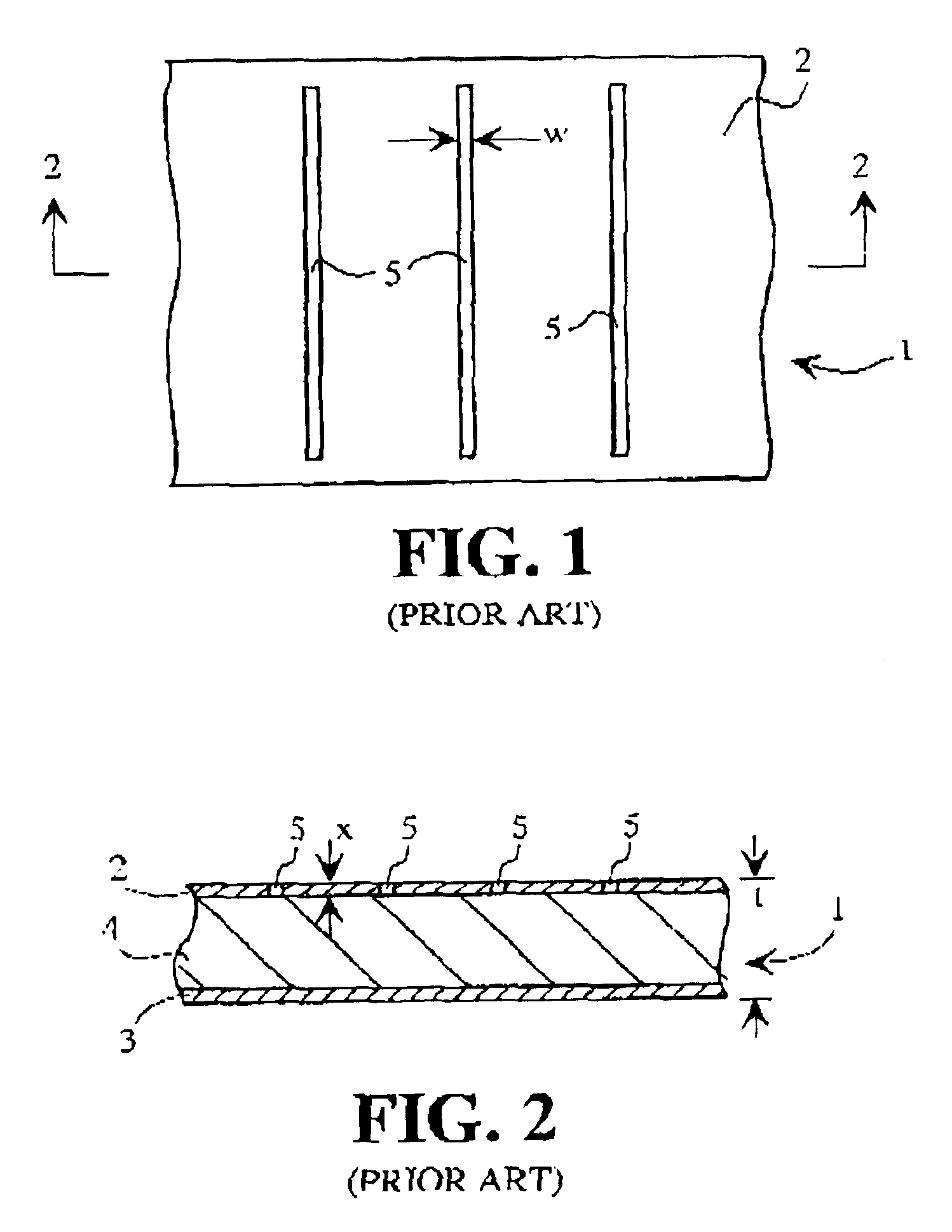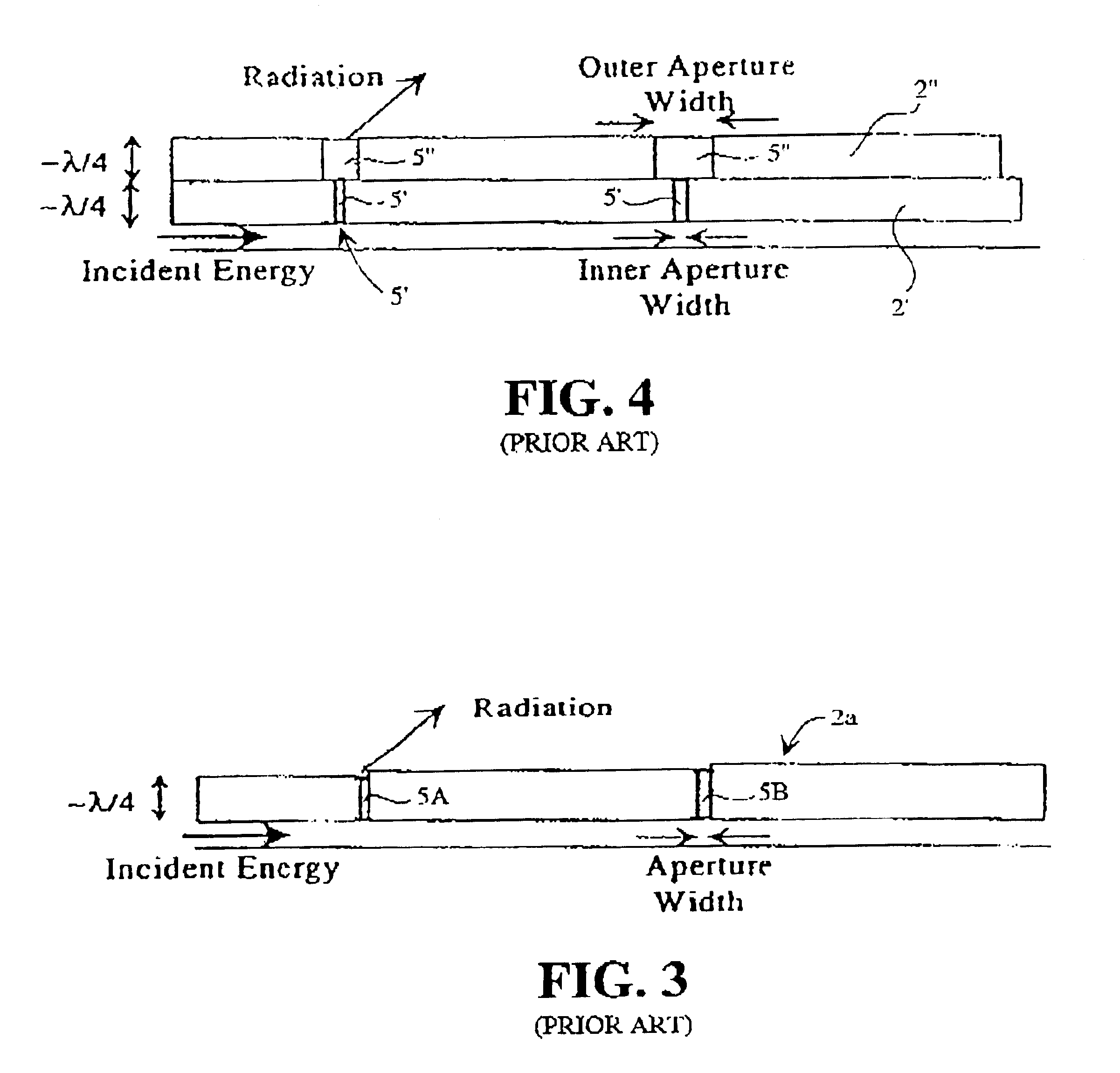Waveguide for a traveling wave antenna
a traveling wave antenna and waveguide technology, applied in the field of traveling wave antennas, can solve the problems of insufficient radiation performance, rigid constraint on the overall thickness of the traveling wave antenna, limit the impedance values that can be obtained, etc., and achieve the effect of achieving a large range of aperture impedances
- Summary
- Abstract
- Description
- Claims
- Application Information
AI Technical Summary
Benefits of technology
Problems solved by technology
Method used
Image
Examples
Embodiment Construction
[0027]The present invention now will be described more fully hereinafter with reference to the accompanying drawings, in which preferred embodiments of the invention are shown. This invention may be embodied in many different forms and should not be construed as limited to the embodiments set forth herein.
[0028]Referring to FIG. 5, therein is shown the top plate 20 of a waveguide 21 according to the invention. FIG. 5 also shows a bottom plate 25 of the waveguide 21. The top plate 20 has a uniform thickness of approximately λ / 4. Incident energy is input at the left end in FIG. 5 and the load is located at the right end. Radiating energy is discharged through apertures 22 provided in the top plate 20 in spaced relation therealong. The apertures 22 have a width at the inner surface 23 of the top plate 20 which is less than the width at the outer surface 24 of the top plate 20. Thereby, the apertures 22 are formed as flared apertures having inclined faces. The flared apertures 22 provid...
PUM
 Login to View More
Login to View More Abstract
Description
Claims
Application Information
 Login to View More
Login to View More - R&D
- Intellectual Property
- Life Sciences
- Materials
- Tech Scout
- Unparalleled Data Quality
- Higher Quality Content
- 60% Fewer Hallucinations
Browse by: Latest US Patents, China's latest patents, Technical Efficacy Thesaurus, Application Domain, Technology Topic, Popular Technical Reports.
© 2025 PatSnap. All rights reserved.Legal|Privacy policy|Modern Slavery Act Transparency Statement|Sitemap|About US| Contact US: help@patsnap.com



